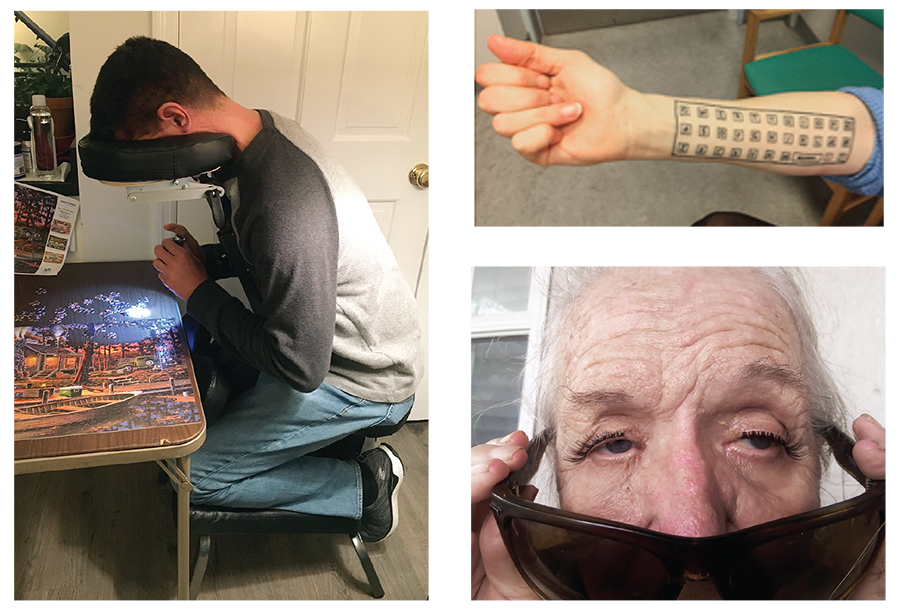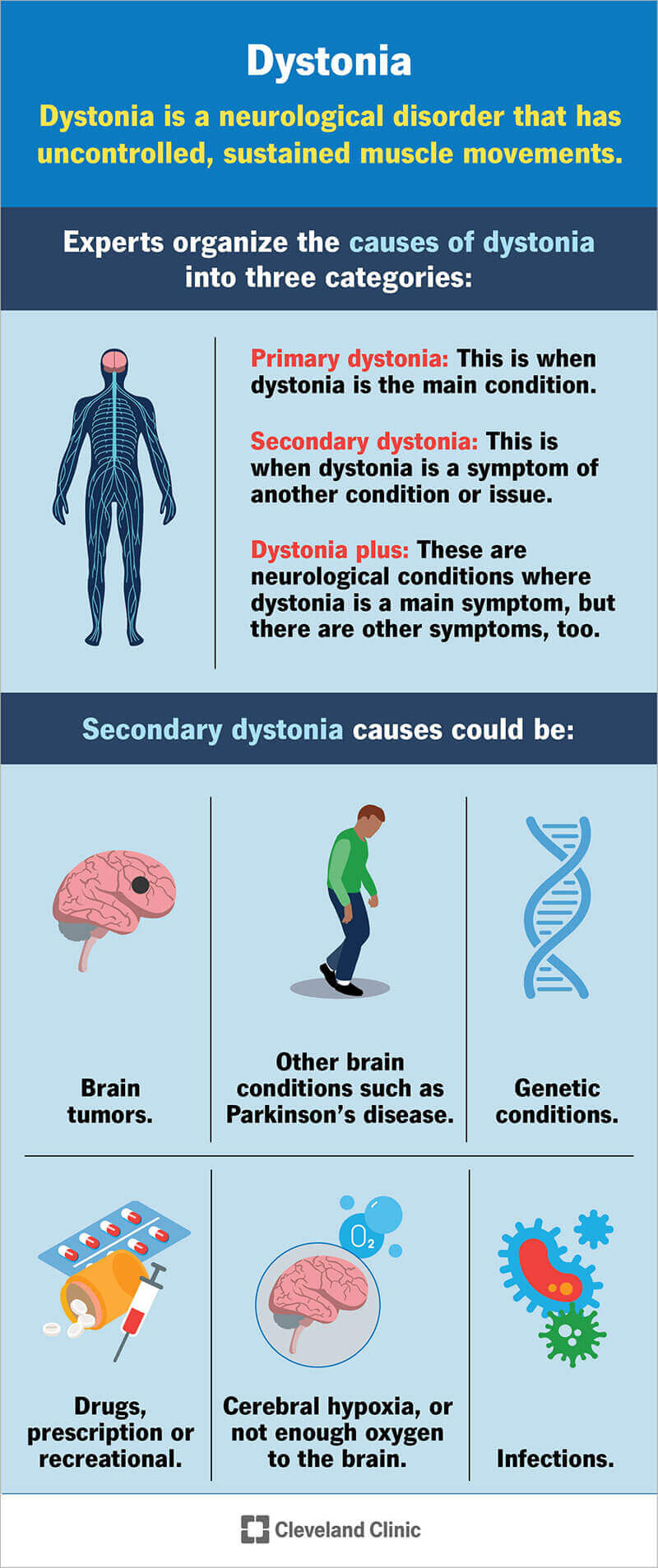Living with dystonia can present a range of challenges, but with expert guidance and a positive mindset, you can improve your quality of life. In this article, we will explore some practical tips from specialists in the field of dystonia management. From implementing lifestyle changes to seeking support from healthcare professionals, this insightful guide will equip you with the tools to navigate the complexities of dystonia and enhance your overall well-being. Whether you are newly diagnosed or have been living with dystonia for years, these expert tips can make a profound difference in your daily life.

Understanding Dystonia
Dystonia is a neurological movement disorder characterized by involuntary and often repetitive muscle contractions that cause abnormal movements or postures. It can affect any part of the body, from the limbs to the face and even the vocal cords. The exact cause of dystonia is still not fully understood, but it is believed to involve a combination of genetic and environmental factors. The condition can vary in severity and can have a significant impact on a person’s quality of life.
What is Dystonia?
Dystonia is a condition that leads to involuntary muscle contractions, which can result in twisting or repetitive movements and abnormal postures. These abnormal movements can occur in any part of the body and are often triggered by certain actions or tasks. Dystonia can be classified into two main categories: focal and generalized. Focal dystonia affects only one area of the body, such as the eyelids, neck, hand, or foot. Generalized dystonia, on the other hand, affects multiple areas of the body simultaneously.
Types of Dystonia
There are several different types of dystonia, each characterized by the specific body parts affected and the underlying cause. Some common types of dystonia include:
- Cervical dystonia: Also known as spasmodic torticollis, this type of dystonia affects the muscles of the neck, causing abnormal head and neck movements or postures.
- Blepharospasm: This type of dystonia causes involuntary eyelid spasms or forced closure of the eyelids, affecting a person’s vision and daily activities.
- Writer’s cramp: This focal dystonia primarily affects the hand and forearm muscles, making it difficult to write or perform fine motor tasks.
- Oromandibular dystonia: This form of dystonia affects the muscles of the jaw, tongue, and face, resulting in difficulties with speaking, chewing, and swallowing.
Causes of Dystonia
The exact cause of dystonia is still not fully understood. However, research suggests that a combination of genetic and environmental factors may play a role in its development. Dystonia can be inherited, with several genetic mutations identified as potential contributors. Other possible causes include brain trauma, certain medications, infections, and exposure to toxins. It is important to note that not all individuals with the genetic predisposition for dystonia will develop the condition, and environmental triggers may be necessary for the symptoms to manifest.
Diagnosing Dystonia
Diagnosing dystonia can be challenging, as it is often a clinical diagnosis based on the presence of characteristic signs and symptoms. However, certain steps can be taken to confirm the diagnosis and rule out other potential causes of the symptoms.
Recognizing Symptoms
The first step in diagnosing dystonia is recognizing the symptoms. Common signs of dystonia may include involuntary muscle contractions, muscle spasms, abnormal postures, and repetitive movements. These symptoms can vary depending on the type of dystonia and the body parts affected. It is important to provide detailed information about your symptoms to your healthcare provider to aid in the diagnosis.
Medical Evaluation
Once dystonia is suspected, a medical evaluation will be conducted to assess your overall health and gather additional information. This evaluation may include a comprehensive medical history, physical examination, and neurological examination. Your healthcare provider will pay particular attention to the affected body parts and any triggering factors that exacerbate the symptoms.
Diagnostic Tests
In some cases, additional diagnostic tests may be recommended to confirm the diagnosis and rule out other potential causes of the symptoms. These tests may include blood tests to check for genetic markers or other underlying conditions, neuroimaging studies such as magnetic resonance imaging (MRI) or computerized tomography (CT) scans to assess the brain structure, and electromyography (EMG) to measure the electrical activity of muscles.

Medical Management of Dystonia
While there is no cure for dystonia, there are several medical treatment options available to manage the symptoms and improve quality of life. These treatments aim to reduce muscle contractions and ease the associated pain and discomfort.
Medication Options
Medications are often the first line of treatment for dystonia, especially in milder cases. Different classes of medications may be prescribed, depending on the type and severity of dystonia. These may include muscle relaxants, such as baclofen or diazepam, anticholinergic drugs, such as trihexyphenidyl, or dopamine-depleting agents, such as tetrabenazine. It is important to work closely with your healthcare provider to find the most effective medication and dosage for your specific needs.
Botulinum Toxin Injections
Botulinum toxin injections, commonly known as Botox injections, are a popular treatment option for focal dystonias, such as cervical dystonia and blepharospasm. The toxin works by blocking the release of acetylcholine, a neurotransmitter that signals muscle contractions. By injecting small amounts of botulinum toxin into the affected muscles, the excessive contractions can be temporarily reduced, providing relief from the symptoms. The effects of these injections typically last for several months, after which additional injections may be required.
Deep Brain Stimulation
Deep brain stimulation (DBS) is a surgical procedure that involves implanting electrodes into specific areas of the brain. These electrodes deliver electrical impulses to disrupt abnormal brain activity and reduce dystonia symptoms. DBS is primarily used for more severe cases of dystonia that do not respond well to medication or botulinum toxin injections. The procedure is reversible and adjustable, allowing healthcare providers to make changes to the stimulation settings as needed. DBS requires careful patient selection and ongoing management by a specialized team.
Surgical Interventions
In certain cases, surgical interventions may be considered to manage dystonia. These may include selective denervation surgery, which involves removing specific nerves to lessen muscle contractions, or pallidotomy, which involves destroying a small portion of the brain to reduce dystonia symptoms. Surgical interventions are generally considered when conservative treatment options have failed to adequately control the symptoms and the benefits outweigh the potential risks.
Non-Medical Approaches to Dystonia Management
In addition to medical interventions, there are several non-medical approaches that can aid in the management of dystonia. These approaches focus on enhancing mobility, function, and overall quality of life.
Physical Therapy
Physical therapy plays a crucial role in dystonia management by improving muscle strength, flexibility, and coordination. A physical therapist will work with you to design a personalized exercise program tailored to your specific needs and goals. This may include stretching exercises, resistance training, and range of motion exercises to target the affected muscles and improve overall mobility.
Occupational Therapy
Occupational therapy focuses on helping individuals with dystonia to perform daily activities more efficiently and independently. An occupational therapist can assess your functional abilities, identify any limitations, and provide strategies to optimize your performance. They may recommend adaptive equipment or modifications to ensure a better fit for your needs.
Speech Therapy
Dystonia affecting the vocal cords or facial muscles can result in speech difficulties. Speech therapy can be beneficial in improving voice quality, articulation, and swallowing. A speech-language pathologist will work with you to develop techniques and exercises to enhance vocal control and reduce speech-related challenges.
Assistive Devices
Assistive devices, such as braces, splints, or orthotics, can provide additional support to the affected body parts, reducing excessive movements or enabling a more functional posture. These devices can help individuals with dystonia regain independence and perform daily activities with greater ease and comfort.
Alternative and Complementary Therapies
Certain alternative and complementary therapies may be explored alongside medical interventions to manage dystonia symptoms. These may include techniques such as massage therapy, acupuncture, yoga, or meditation. While the evidence for their effectiveness is limited, some individuals may find these therapies helpful in reducing stress, promoting relaxation, and improving overall well-being.

Psychological Support for Dystonia Patients
Living with dystonia can be challenging both physically and emotionally. Therefore, psychological support is crucial in helping individuals cope with the impact of the condition on their daily lives.
Counseling and Therapy
Counseling and therapy can provide a safe space for individuals with dystonia to express their emotions, frustrations, and concerns. A mental health professional can help develop coping strategies, explore ways to manage stress and anxiety, and provide guidance in adapting to the challenges posed by the condition.
Support Groups
Joining a support group can be immensely beneficial for individuals with dystonia, as it allows them to connect with others who are facing similar challenges. Support groups provide a platform to share experiences, exchange information, and receive emotional support from individuals who truly understand what you are going through.
Coping Strategies
Developing effective coping strategies can significantly improve quality of life for individuals with dystonia. This may include practicing relaxation techniques, engaging in hobbies or activities that bring joy, setting realistic goals, and seeking social support from friends and family. It is important to remember that you are not alone in your journey and that there are resources available to help you navigate the challenges posed by dystonia.
Lifestyle Modifications for Dystonia
In addition to medical and non-medical interventions, certain lifestyle modifications can also contribute to better management of dystonia symptoms.
Stress Management
Stress has been known to exacerbate dystonia symptoms in many individuals. Therefore, proactive stress management techniques, such as deep breathing exercises, mindfulness, and relaxation techniques, can be helpful in reducing symptom severity. Identifying stress triggers and implementing strategies to manage them can significantly improve overall well-being.
Regular Exercise
Engaging in regular exercise has numerous benefits for individuals with dystonia. Exercise improves muscle strength and flexibility, promotes relaxation, enhances cardiovascular health, and releases endorphins, which can boost mood. It is important to consult with a healthcare provider or physical therapist to determine the most appropriate exercises for your specific condition.
Healthy Diet
Maintaining a healthy and balanced diet is important for overall well-being, including the management of dystonia symptoms. A diet rich in fruits, vegetables, whole grains, and lean proteins can provide essential nutrients and support optimal brain health. It is also advisable to limit the consumption of processed foods, caffeine, and alcohol, as they may potentially worsen symptoms for some individuals.
Sleep Hygiene
Adequate sleep is crucial for overall health and well-being. Poor sleep quality or insufficient sleep can exacerbate dystonia symptoms. It is essential to establish a regular sleep schedule, create a relaxing bedtime routine, and ensure a comfortable sleep environment. If sleep disturbance persists, it is important to consult with a healthcare provider for further evaluation and management.
Managing Dystonia at Work and School
Dystonia can present unique challenges in work and school settings. However, with appropriate accommodations and support, individuals with dystonia can thrive in these environments.
Workplace Accommodations
Communicating with your employer about your dystonia and the specific challenges you face can help facilitate workplace accommodations. This may include adjustments to your work environment, such as ergonomic modifications to your workstation, flexible work hours, or the option to work remotely. Engaging in open and honest discussions with your employer can lead to the implementation of strategies that optimize your work performance and minimize the impact of dystonia.
Educational Support
For individuals with dystonia who are still in school, seeking educational support is crucial. Working closely with teachers, school administrators, and guidance counselors can help ensure that appropriate accommodations and modifications are made to facilitate learning. This may include extra time for exams, access to assistive technology, or seating arrangements that minimize physical discomfort.
Disclosure and Advocacy
Deciding whether or not to disclose your dystonia diagnosis is a personal choice. However, sharing information about your condition with trusted colleagues, classmates, or supervisors can foster understanding and empathy. Being an advocate for yourself and others with dystonia can help raise awareness, reduce stigma, and promote a more inclusive and accommodating environment for everyone.
Tips for Enhancing Daily Life with Dystonia
In addition to the various management strategies discussed above, there are several practical tips that can further enhance daily life for individuals with dystonia.
Organization and Time Management
Maintaining a well-organized and structured daily routine can help minimize stress and increase productivity. Utilizing calendars, planners, and reminder systems can assist with managing appointments, medications, and other important tasks. Breaking down larger tasks into smaller, more manageable steps can also help prevent overwhelm and increase efficiency.
Adaptive Equipment and Tools
Exploring the use of adaptive equipment and tools can greatly enhance independence and functionality. Specialized utensils, writing aids, or assistive devices specific to your needs can reduce the challenges associated with fine motor skills and enable greater participation in daily activities.
Assistive Technology
Advancements in assistive technology have significantly improved the quality of life for individuals with dystonia. Voice recognition software, adaptive keyboards, smartphone apps, and other assistive technologies can assist with communication, mobility, and daily tasks. Exploring available options and finding what works best for you can greatly enhance your ability to navigate daily life with greater ease.
Social Engagement
Maintaining social connections and engaging in enjoyable activities is important for overall mental and emotional well-being. Participating in hobbies, joining clubs or organizations, or seeking out support groups can provide opportunities for social interaction, personal growth, and a sense of belonging. Surrounding yourself with understanding and supportive individuals can make a significant difference in managing dystonia-related challenges.

Dealing with Dystonia-related Challenges
Living with dystonia presents a unique set of challenges, and it is important to address these challenges proactively to ensure the best possible quality of life.
Pain Management
Dystonia can be associated with chronic pain, which can significantly impact daily functioning and quality of life. Working with healthcare providers to develop an individualized pain management plan is important in addressing and minimizing pain symptoms. This may involve a combination of medications, physical therapy, relaxation techniques, and complementary therapies.
Communication Difficulties
Dystonia affecting the vocal cords or facial muscles can make communication challenging. It is important to explore alternative modes of communication, such as using written or electronic communication devices, gestures, or augmentative and alternative communication (AAC) systems. Speech therapy can also be beneficial in improving speech clarity and facilitating communication.
Mobility and Balance Issues
Dystonia can affect mobility and balance, making tasks such as walking or standing difficult. Utilizing assistive devices, such as canes, walkers, or orthotic devices, can improve stability and reduce the risk of falls. Working with a physical therapist to develop exercises and strategies to improve coordination and balance can also be beneficial.
Emotional Well-being
Coping with the physical and emotional challenges of dystonia can be overwhelming. It is important to prioritize emotional well-being by seeking support from loved ones, joining support groups, engaging in activities that bring joy, and practicing self-care. Seeking professional counseling or therapy may also be helpful in managing the emotional impact of the condition.
Research and Future Directions in Dystonia
Dystonia research is continually expanding our understanding of the condition and improving treatment options. Ongoing research aims to identify risk factors, investigate genetic and environmental contributors, and develop more targeted interventions.
Current Research
Current research in dystonia ranges from investigating the underlying genetic mechanisms to exploring novel treatment options. Researchers are studying the role of specific genes and environmental factors in dystonia development, as well as the potential benefits of gene therapy and deep brain stimulation in managing symptoms. Clinical trials are also being conducted to evaluate the safety and efficacy of emerging therapies, providing hope for future advancements in dystonia management.
Emerging Therapies
Emerging therapies in the field of dystonia include neuromodulation techniques, such as transcranial magnetic stimulation (TMS) and transcranial direct current stimulation (tDCS), which involve non-invasive brain stimulation to modulate abnormal brain activity. Additionally, advances in genetic research may lead to the development of more personalized treatment approaches tailored to specific genetic subtypes of dystonia. While these therapies are still in the experimental stage, they hold promise for further improving the management of dystonia in the future.
In conclusion, dystonia is a complex condition that can have a significant impact on a person’s life. However, with a comprehensive management plan that includes medical interventions, non-medical approaches, psychological support, and lifestyle modifications, individuals with dystonia can experience an improved quality of life. Ongoing research and advancements in treatment options offer hope for even better management strategies in the future. By staying informed, seeking support, and advocating for yourself, you can navigate the challenges of dystonia with resilience and enhance your daily life.
